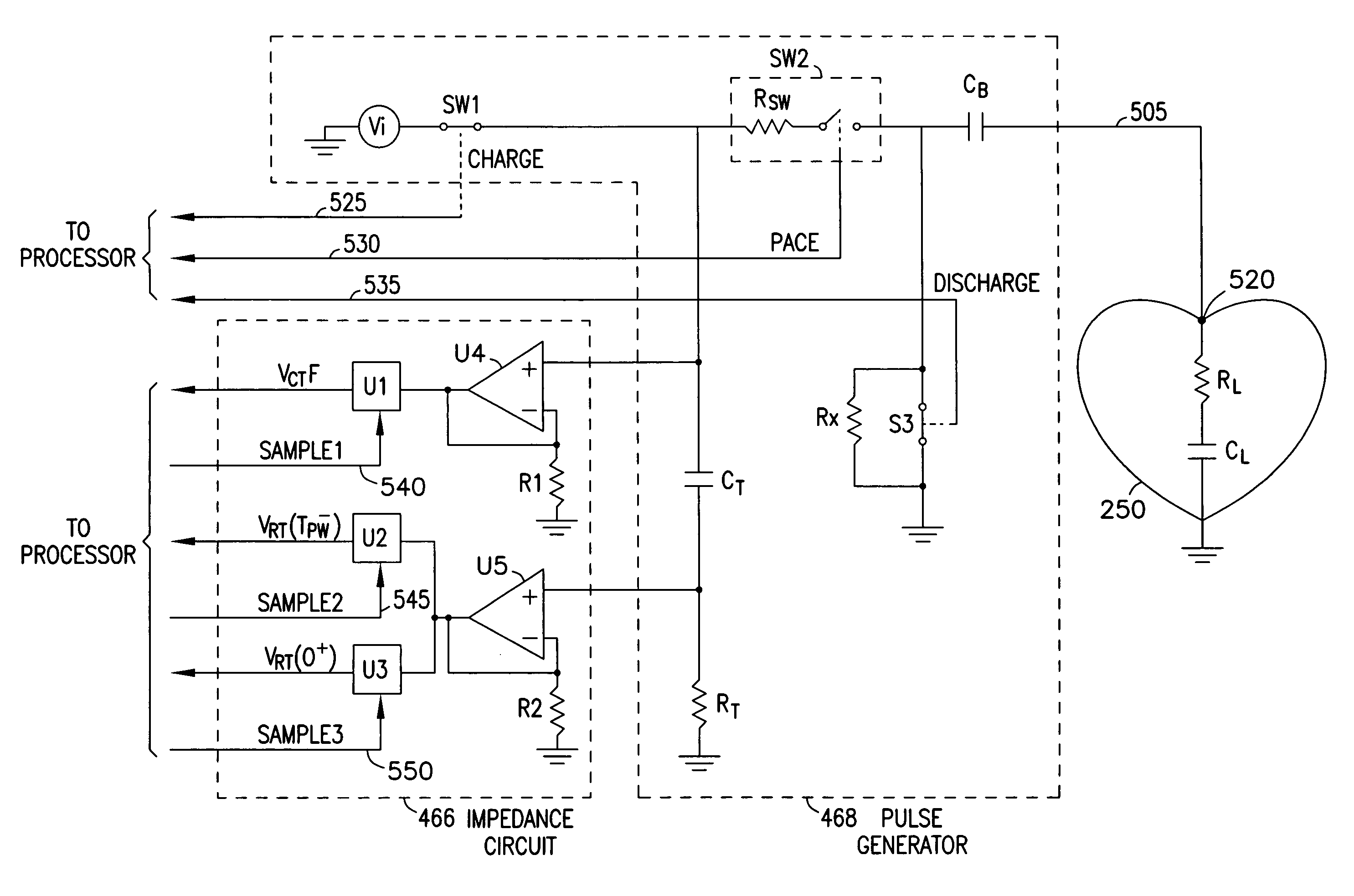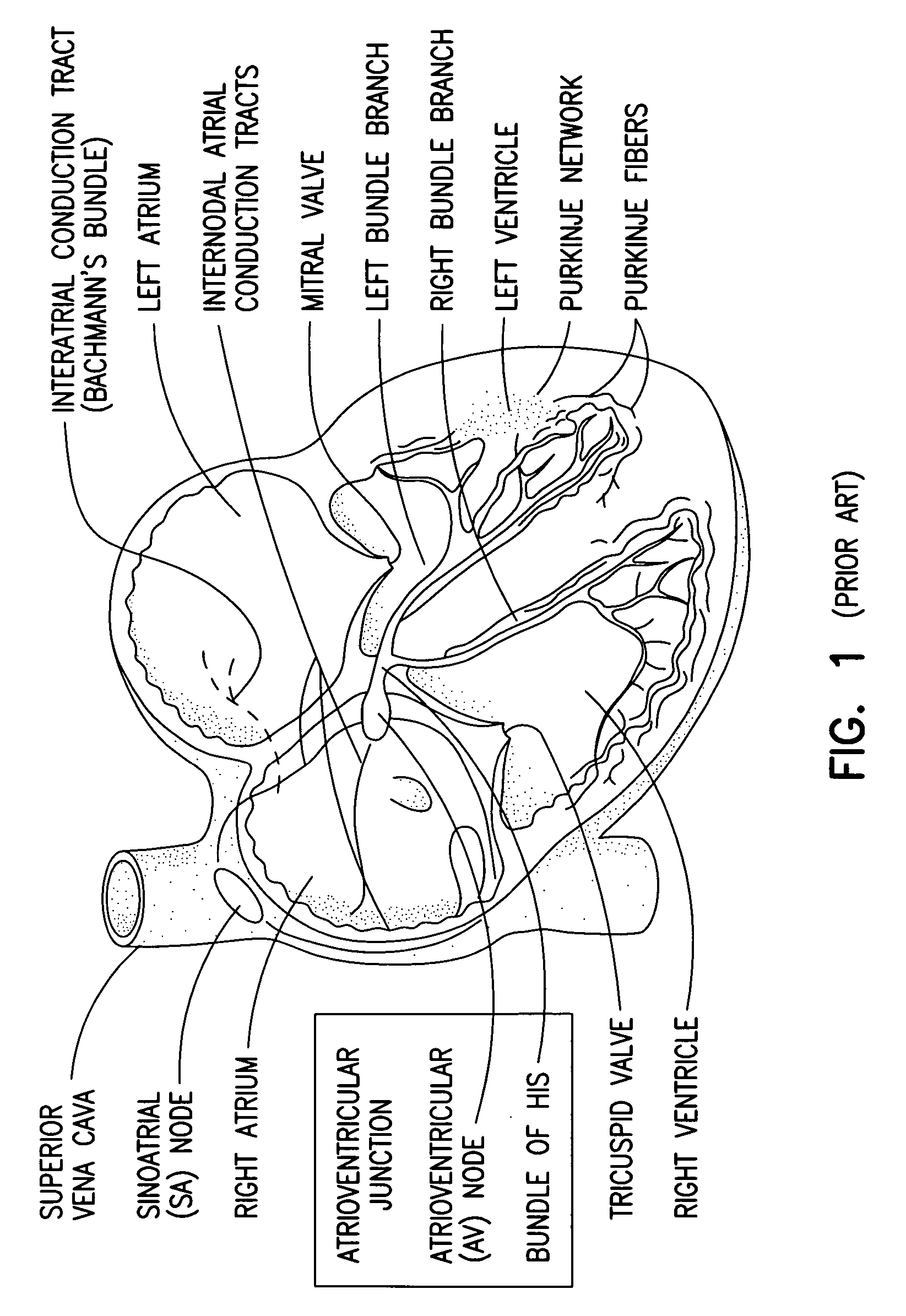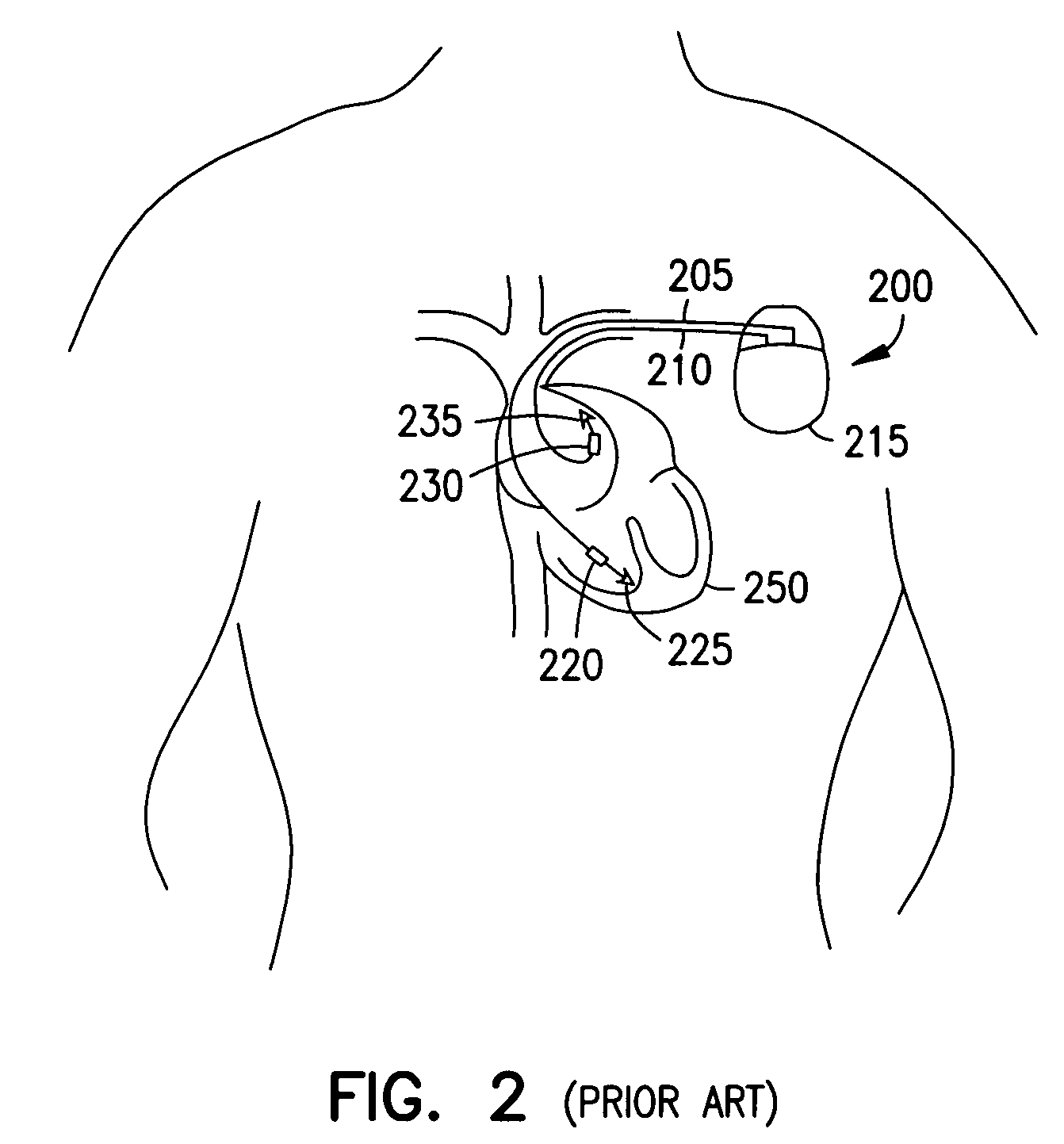Implantable cardiac stimulator with electrode-tissue interface characterization
- Summary
- Abstract
- Description
- Claims
- Application Information
AI Technical Summary
Benefits of technology
Problems solved by technology
Method used
Image
Examples
Embodiment Construction
[0038]An exemplary cardiac stimulator 400 made in accordance with the present invention is illustrated in the block diagram of FIG. 4. The cardiac stimulator 400 may be a pacemaker, a defibrillator, or any or implantable cardiac stimulator. The cardiac stimulator 400 generally includes atrial and ventricular sense circuits 462 and 464, a processor 470, main memory 475, an impedance circuit 466, and a pulse generator 468, all housed in enclosure, or “can”401. The exemplary embodiment of FIG. 4 shows cardiac stimulator 400 with four leaded electrodes, namely atrial tip and ring electrodes 410 and 420, respectively, and ventricular ring and tip electrodes 440 and 450, respectively. Can 401 may function as an additional electrode in accordance with known techniques. The invention, however, may be practiced using any number of electrodes implanted in any chamber of the heart and in any configuration.
[0039]Referring still to FIG. 4, electrodes 410 and 420 couple to the atrial sense circui...
PUM
 Login to View More
Login to View More Abstract
Description
Claims
Application Information
 Login to View More
Login to View More - R&D
- Intellectual Property
- Life Sciences
- Materials
- Tech Scout
- Unparalleled Data Quality
- Higher Quality Content
- 60% Fewer Hallucinations
Browse by: Latest US Patents, China's latest patents, Technical Efficacy Thesaurus, Application Domain, Technology Topic, Popular Technical Reports.
© 2025 PatSnap. All rights reserved.Legal|Privacy policy|Modern Slavery Act Transparency Statement|Sitemap|About US| Contact US: help@patsnap.com



